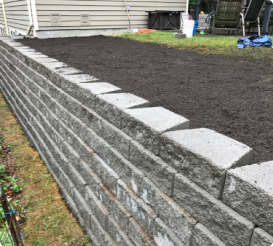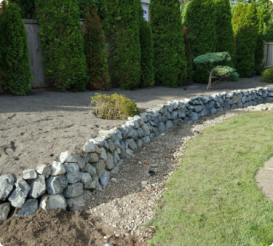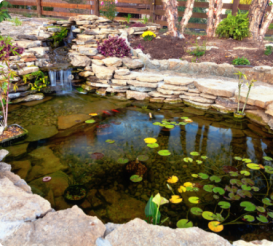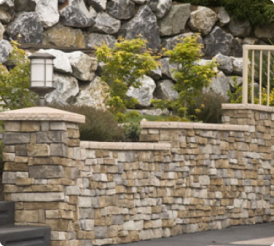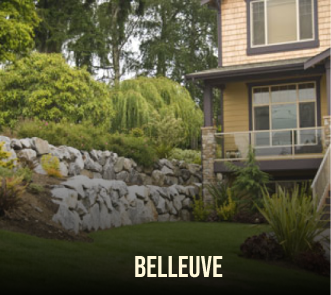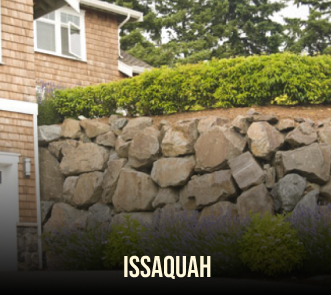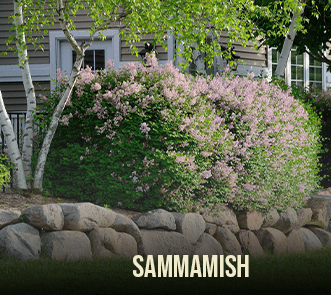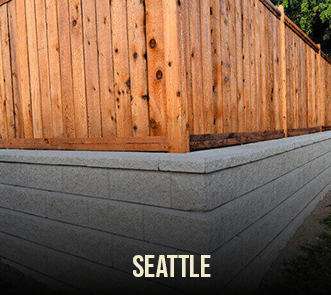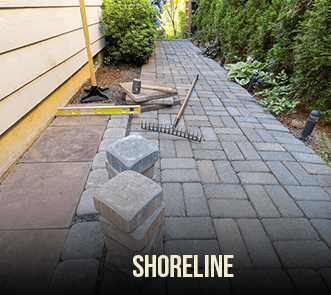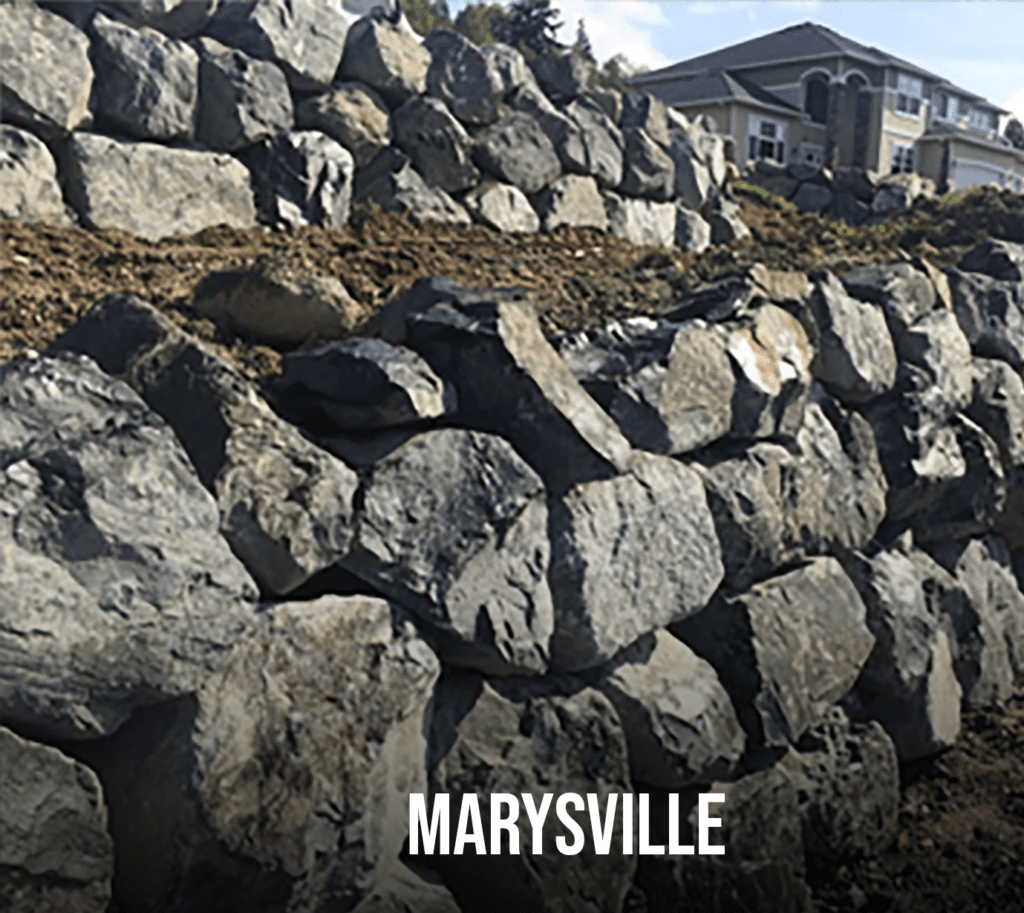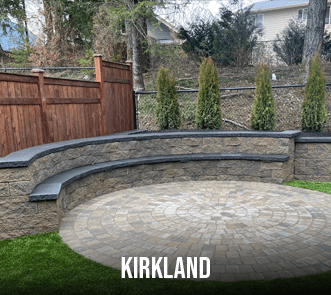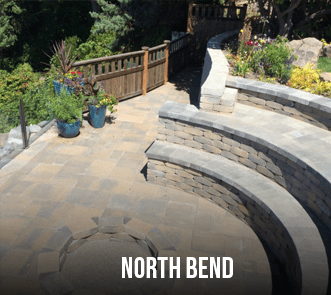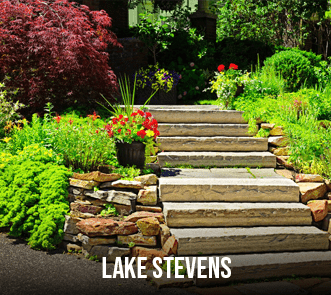Welcome to New Life Rockeries
Retaining Wall Repair Near Me: Stone, Block, & Rock Contractors!
Retaining Wall Repair Near Me: Stone, Block, & Rock Contractors!
Request a Quote
Retaining Wall Repair Near Me: The Best Company & Contractors Near You!
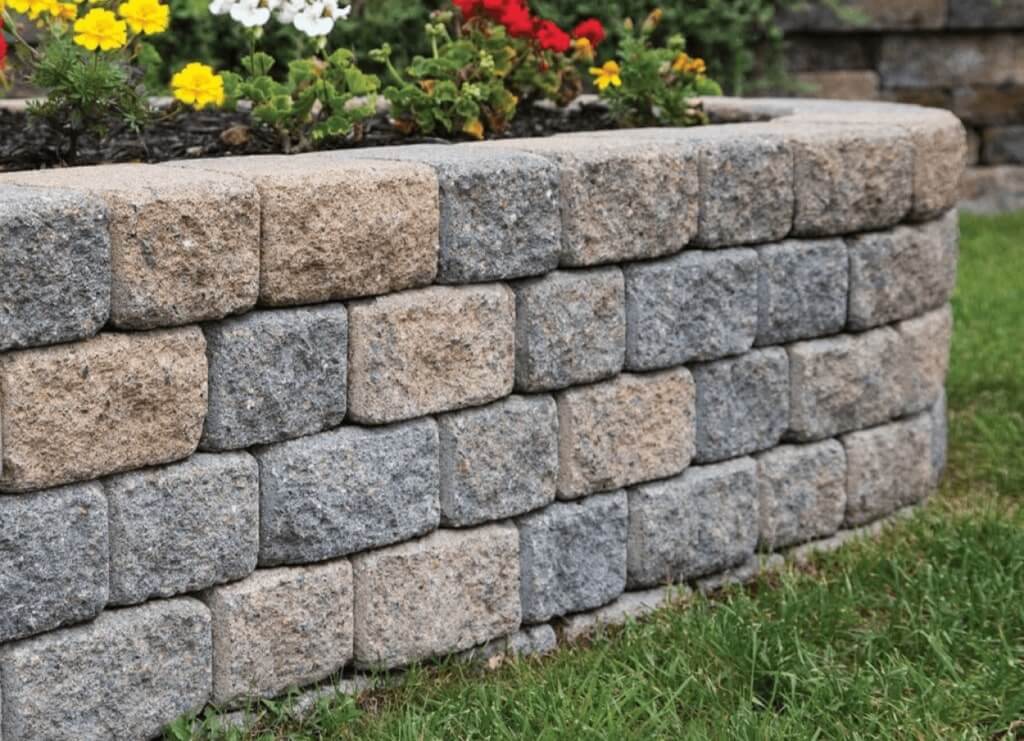
Have you been Googling “retaining wall repair near me?” If your zip code is in the Pacific Northwest, look no further than New Life Rockeries.
A retaining wall provides functional and structural support for your landscaping, prevents soil erosion, and stops your property from shifting and sliding on hilly terrains. It’s important to keep your retaining walls in good condition, fixing issues before they cause even bigger problems for your property.
Whether it’s a minor crack or a major leak, retaining walls can be tricky to fix. But with our professional expertise and 35 years of experience, your retaining wall repair can be as simple as picking up the phone. So if you’ve been wondering “who does the best landscaping near me?” contact us at New Life Rockeries and discover our retaining wall repair services today.
Why Choose New Life Rockeries for Retaining Wall Repair?
hIGH-QUALITY WORK
New Life Rockeries has been serving the Seattle Washington area for over 35 years, with extensive experience building and repairing beautiful retaining walls. As professional retaining wall experts, all of our contractors have undergone extensive training to ensure that they’re equipped with unparalleled knowledge and experience to get the job done. We are committed to using the best materials and leaving no stone unturned to find the best solution to any problem.
Communication
No project is too big or too small for our team, and our expertise in repairing retaining walls can tackle any problem head-on. With open and honest communication from the get-go, we will carefully examine each project to ensure the end result is exactly what you need. We will always keep you informed on the project, at every step of the way.
Stress-Free Experience
Our primary goal is to offer homeowners a stress-free experience, attaining their dream garden at an affordable price. We will work hard to ensure that the whole process is relaxing and stress-free, delivering nothing but the best and most cost-efficient service.
Testimonials
Absolutely fantastic.
We had the New Life team replace our failing retaining wall, build steps from our front to back yard, and create an area for a fire pit.
Despite torrential rain during the project, they stabilized our wall and completed the work with surgical precision.
Our neighbors were also really happy with the transformation.
They replaced an ugly, rotten wall with a beautiful terraced one —in terrible weather—and stayed on budget doing so.
They were so easy to work with, and we are so happy with the result.
Thank you!!
New Life Rockeries was so easy to work with on every step of the process.
They heard our hopes and goals, provided awesome professional feedback to make it even better than we imagined, and got the job done!
They started sooner than we expected, were extremely detail-focused (since I'm working from home, I'd spy a little and was impressed by how they would take the time to get each stone perfect), and they came in under budget!
This was not a small project either—they:
- Leveled a weird hill we had
- Moved an old rock wall
- Built a new rock wall with the old stones in another part of the yard
- Constructed a beautiful new patio and retaining wall with a built-in bench
Can't recommend them enough and will definitely get more projects done by them in the future!
In the photos, you’ll see a concrete wall—that ugly thing was NOT their work. It’s getting covered by a fence that will sit on top of the lovely wall New Life built.
We loved working with the team.
They listened to our concerns, addressed landscape issues, provided reasonable solutions that worked, and delivered excellent work.
The team was meticulous and conscientious of our neighbors. They allowed us to expand on the project, finding what worked best.
Clean-up every day was part of their routine, and we were kept informed every step of the way.
We absolutely love our new patio areas, rockeries, landscape, and drainage solutions. We now have a very livable and workable space!
We would hire them again.




7 Signs Your Retaining Wall Needs Repair
The type of damage to your retaining walls will affect the repair process. Here are some of the most common reasons why you might need retaining wall repair services:
1. Cracks or Crumbling
When inspecting your retaining walls for damage, one of the first problems you might find is a crack that’s beginning to form on the surface. This is normal and very common, as external forces will naturally erode the wall over time. Although it might seem minor, a crack in your retaining wall could lead to bigger structural issues, so it’s important to repair cracks when you find them.
A cracked retaining wall may also begin to crumble in small or large sections. A crumbling retaining wall will also need immediate attention to avoid any further damage. The sooner you catch and repair cracks and crumbling, the easier and more cost-effective your repair project will be.
2. Foundations Collapsing
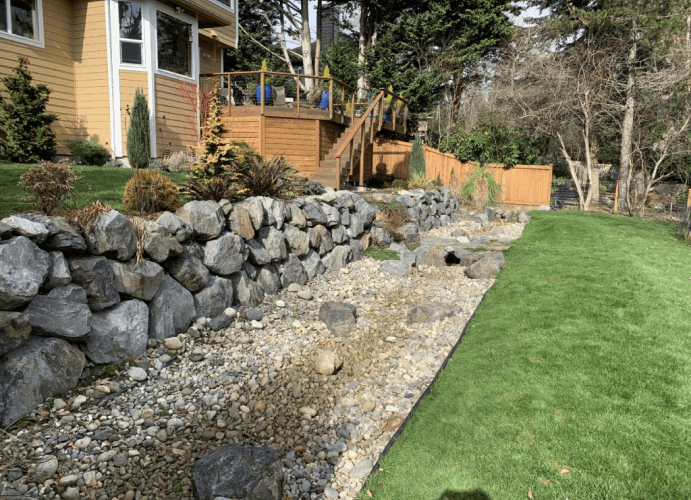
3. Salt Deposits
Efflorescence is a build-up of salt that can occur on retaining walls that are made from concrete or brick. It looks like a white powder or crystalline coating on the wall surface. Efflorescence suggests that moisture is coming through the wall, dragging salt with it before evaporating and leaving behind this granular white coating.
This may be caused by heavy rain and snow, often in combination with inadequate drainage and waterlogged soil. Salt deposits aren’t just an aesthetic issue, but they can also indicate bigger issues with drainage that may lead to further damage if not treated swiftly. A retaining wall repair project should combat efflorescence by reducing moisture build-up with additional drainage and sealant for cracks.
4. Leaks
If water begins to seep through your retaining wall, you may have an issue that needs attention. Water leaks could be caused by a faulty drainage pipe, loose soil, cracking, crumbling, or other forms of structural damage to your wall. Water damage will need to be repaired and your drainage system should be inspected to avoid further problems.
5. Wood Rot
Wooden retaining walls can be prone to water damage and rot. This may happen if they’re not installed and sealed correctly, or it could be due to drainage issues that overexpose them to water.
These retaining walls are often made with railroad ties, and they will have important wood supports that run perpendicular to the retaining wall below ground. By sticking straight into the hill your retaining wall is holding back, railroad ties provide crucial structural integrity to the wall. They are, however, also susceptible to rot if they are not sealed correctly. When this happens, the foundation of the wall is compromised.
Rotted sections of your retaining wall will need to be replaced before they compromise the structural integrity of your wall.
6. Bowing
A bowing retaining wall is one that is bending and buckling at the center. This may be due to foundation issues or inadequate drainage. Bowing retaining walls won’t be so effective at retaining soil or resisting pressure, and this may cause elements of your landscaping to slide out of place. Bowing retaining walls require repair before the wall collapses entirely.
7. Leaning
Leaning retaining walls are exactly what they sound like. If your retaining wall is starting to lean at an angle away from the soil it’s retaining, you have a problem that needs to be fixed.
A leaning retaining wall is caused by lateral forces that push it outwards from its original position. This might happen if your soil is too waterlogged, your anchor points are failing, or your foundations are crumbling.
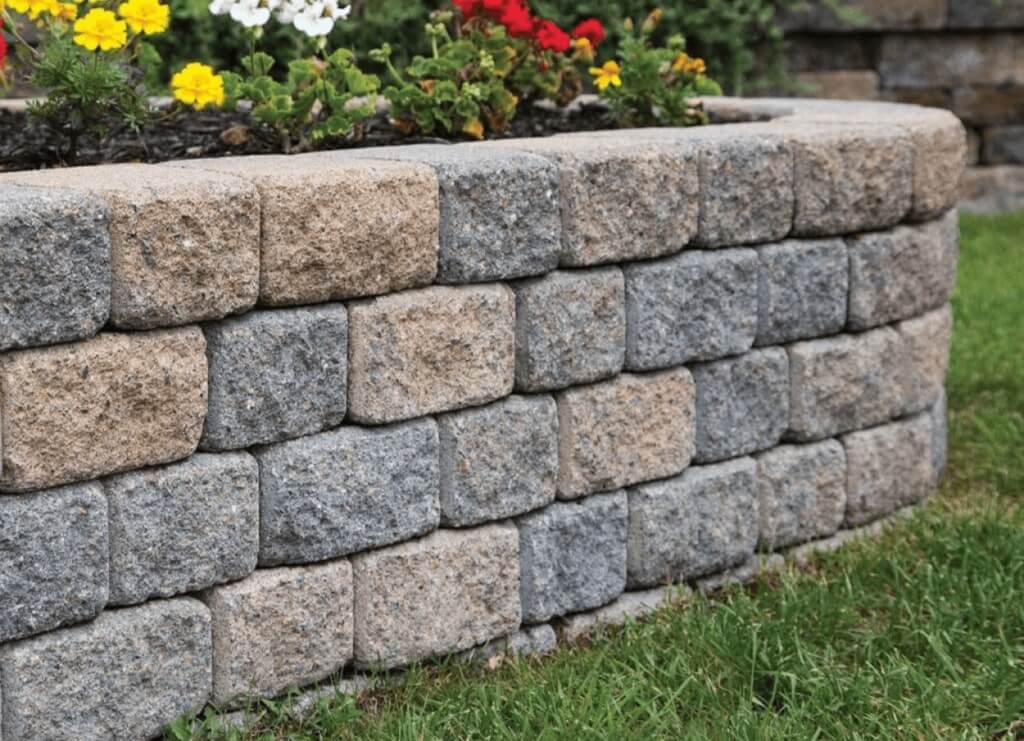
Why Choose New Life Rockeries for Retaining Wall Repair?
Still wondering “who is the best retaining wall repair contractor near me?” As the leading retaining wall experts in the Pacific Northwest, New life Rockeries has you covered. We specialize in providing homeowners with:
- High-Quality Work
New Life Rockeries has been serving the Seattle Washington area for over 35 years, with extensive experience building and repairing beautiful retaining walls. As professional retaining wall experts, all of our retaining wall contractors have undergone extensive training to ensure that they’re equipped with unparalleled knowledge and experience to get the job done. We are committed to using the best materials and leaving no stone unturned to find the best solution to any problem.
- Communication
No project is too big or too small for our team, and our expertise in repairing retaining walls can tackle any problem head-on. With open and honest communication from the get-go, we will carefully examine each project to ensure the end result is exactly what you need. We will always keep you informed on the project, at every step of the way.
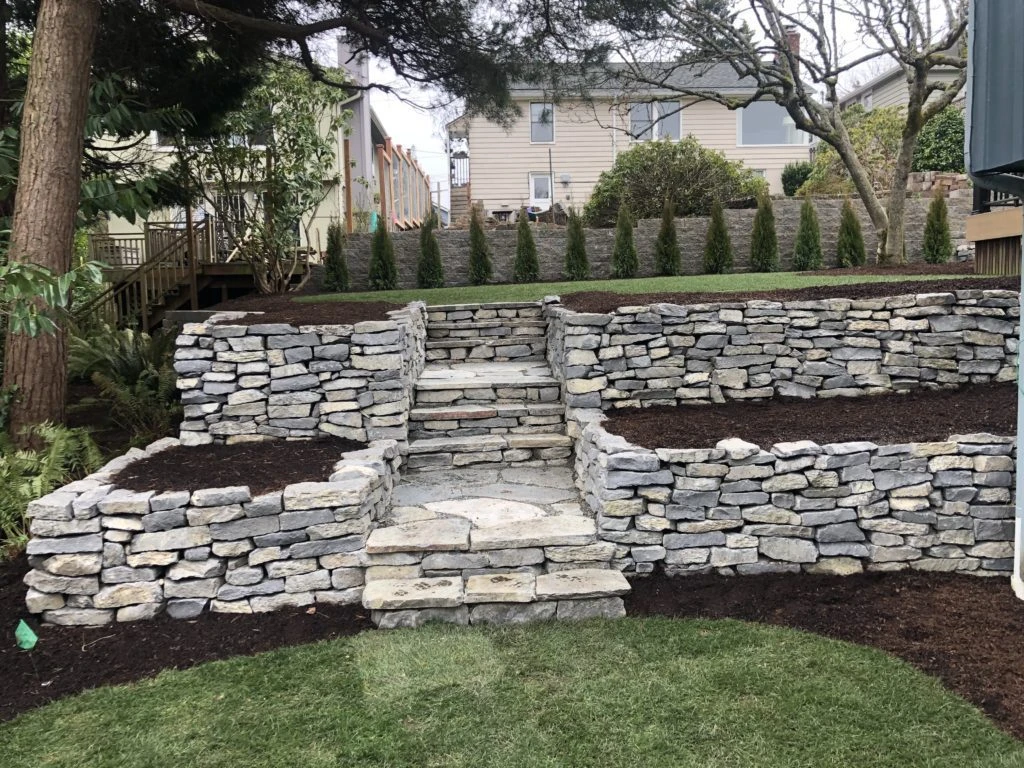
- Stress-Free Experience
What Causes Retaining Wall Problems?
Unfortunately, retaining walls can be damaged by a number of factors that will require your attention. Here’s what causes the most common issues with retaining walls:
- Lateral Forces
While holding their own weight, retaining walls must also resist lateral forces from the soil they are retaining. Because they are holding back large quantities of compacted soil, dirt, stones, and other matter, retaining walls are subject to a lot of pressure. They should be built and installed to manage this pressure properly, with the correct supports and anchors in place. However, a poor build or misplaced support structure will allow lateral forces to take over, pushing your retaining wall outwards. This can cause leaning, bowing, cracks, and crumbling.
- Drainage Issues
One of the most common causes of retaining wall problems is a drainage issue. Without proper drainage, the soil and other matter behind your retaining wall can become waterlogged. This added weight puts too much lateral pressure on your retaining wall, leading to cracks, crumbling, leaning, or full-scale collapse.
These issues might lie with the soil itself. For example, expansive soils like clay are very slow to drain and can lead to a build-up of water. You might also experience problems with waterlogged soil if your drainage pipes become blocked by dirt and debris.
- Extra Load
Adding a load that was not originally accounted for when your retaining wall was installed can add excess pressure that leads to a collapse. For example, an additional car parked on the ground above your retaining wall could add unexpected pressure that causes the wall to fail. Overgrown tree roots or animal activity can also contribute to extra pressure on the foundation of a wall.
If you’re looking to add an extra car to your driveway or build an outhouse, you may need to reinforce your retaining wall first, to account for the additional pressure before any bigger problems occur.
- Severe Weather
A bout of bad weather can contribute to retaining wall damage. In winter, heavy rain, sleet, and snow can cause a buildup of rainwater that adds lateral pressure to your retaining wall. You may also see salt deposits building up if your soil becomes waterlogged.
Extreme weather events like earthquakes, storms, and floods can also cause significant damage. These kinds of weather events can erode the surface of your wall and subject it to excessive force. In the aftermath of an extreme weather event, you may see cracks, crumbling, or leaks in your wall which could lead to a collapse.

Retaining Wall Repair Solutions
No matter the cause of the damage, our contractors will find a way to make it right. Here are some of the ways we might repair a retaining wall:
- Reinforce
It’s possible to reinforce a retaining wall, providing additional support that can relieve some pressure. New plants or landscaping can be added to protect the wall, or concrete can be used to make the base thicker. For a brick retaining wall, new mortar can be added to strengthen it.
- Support with Tiebacks (Dead Man Anchors)
If your retaining wall is leaning or bowing, it may be reinforced to help move it back to its original position. This can be done with tie backs, also known as dead man anchors. These are horizontal rods that provide structural support for a retaining wall. Typically made of timber, tie backs are installed at a perpendicular angle to the wall, attached to both the face of the wall and a timber cross plate. This helps distribute the weight of retained ground and reduce lateral forces, preventing leaning and buckling.
- Straighten with Helical Anchors
Similar to straightening with tie backs, helical anchoring involves using steel supports to pull a retaining wall into place. For walls that are leaning or bowing, foundation repair contractors will often add new anchor points.
Helical anchors are helix-shaped blades that are secured to steel rods to create an anchor. The shaft is inserted through a hole in your retaining wall and the anchor is driven deep into the soil behind it. The anchor is secured by a steel plate and nut at the front of your retaining wall, which can then be gradually tightened until your wall is back to its original position.
- Add Drainage
If waterlogged soil is adding pressure to your retaining wall, causing cracks, leaks, and leaning, then the solution is to reassess your drainage system. Adding more drains can help alleviate pressure and prevent rainwater build-up. There are a few options to improve drainage for retaining walls:
- Weep holes – These are simple small openings made on the face of a retaining wall that allow excess water to seep through.
- Drainage pipes – These are pipes that collect excess water and allow it to drain through the wall, reducing water logging.
- Granular backfills – This involves adding a layer of granular soil, sand, or crushed gravel alongside a retaining wall, which allows water to permeate through until it reaches a drain pipe or weep hole.
A retaining wall repair project may involve any combination of the above drainage solutions to effectively reduce water logging and alleviate pressure.
- Rebuild
In worst-case scenarios, the damage to your retaining wall may be too severe to repair. In these cases, the repair project will involve removing the damaged parts of the wall in sections, before rebuilding them. A full rebuild is usually the last resort, reserved for extreme damages.
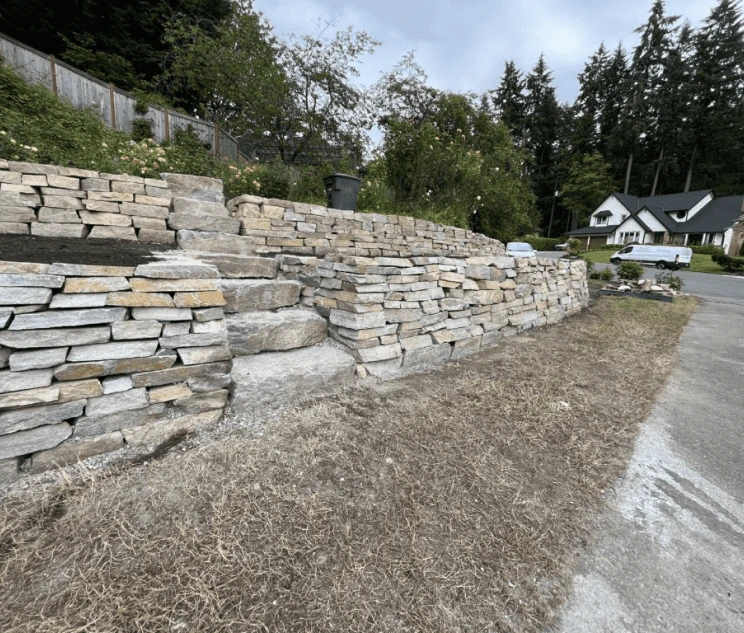
Factors Affecting Retaining Wall Repair Cost
The cost of repairing a retaining wall will depend on a number of factors. Before we land on a quote, we will need to assess the following conditions:
- Material of Retaining Walls
The most common materials used to build retaining walls are stone, brick, cinder blocks, concrete, steel, aggregate, railroad ties (wood), and vinyl. These materials vary drastically in terms of cost, so the original material of your retaining wall will affect the cost of the repair project.
A brick or stone retaining wall will cost more to repair than other materials such as vinyl or railroad ties. The cost to repair a concrete, aggregate, steel, or cinder block retaining wall will lie somewhere in the middle ground.
Type of Retaining Wall
There are a number of different types of retaining walls that will affect the type and price of the solution on offer. These include:
Gravity retaining wall
– Using their own gravitational force, gravity retaining walls are heavy concrete, brick, or stone retaining walls that have a sloped face and are wider at the base in order to support both their own weight and lateral forces.
Cantilever retaining wall
– These retaining walls are made from reinforced concrete, with an L-shaped or T-shaped foundation that supports lateral forces.
Sheet piling retaining wall
– Most commonly used around bodies of water, this type of retaining wall is made of piled stone and is often used for temporary structures.
Sheet piling requires no ground excavation, which may help keep the cost down. The cost of a retaining wall repair will vary depending on the type of wall you have combined with the specific landscaping requirements of your property.
- Type of Soil
The type of soil surrounding your retaining wall can affect the price of your repair project. Expansive soils (clay soils that expand and shrink with water) may need to be removed and replaced, driving up the cost of your project. Overgrown tree roots may also need excavation, requiring additional equipment and labor that will impact the cost of the retaining wall repair project.
- Extent of Damage
One of the main factors that will affect the cost of a repair project is the extent of the damage. Naturally, the amount of work needed to repair a retaining wall will depend on how bad the damage is. The bigger the damage, the higher the cost will rise due to the additional materials and labor required. For example, minor cracks will cost much less to repair than buckling or leaning.
- Type of Solution
The extent of the damage goes hand in hand with the type of solution needed to repair a retaining wall, and this again impacts the cost of the project. For example, a few weep holes will cost less than adding helical anchors, and a simple reinforcement solution will cost less than a full rebuild.
- Location
Retaining Wall Maintenance Tips
If you want your retaining wall to stay in top condition, regular maintenance is needed. By keeping an eye on your retaining walls you can always be aware of damages before they cause bigger problems for your property. Here’s how to care for your retaining wall:
- Regular Inspections
To avoid the need for retaining wall repair services, make sure you inspect your retaining walls regularly for signs of cracks, crumbling, holes, or leaks. The sooner you spot issues like these, the easier they will be to repair, You may even be able to make those minor repairs on your own. If you spot any gaps in the soil, fill those in. It’s also good practice to replace any dead plants near your retaining wall, to ensure you have a healthy landscape and root system for structural support.
If your retaining wall is supporting major structures on your property, we also recommend an inspection with a residential structural engineer every 3-5 years.
- Regular Cleaning
Retaining Wall Repair in Seattle Washington: Request a Quote!
New Life Rockeries has been installing and repairing retaining walls in the Pacific Northwest for 35 years. Our business goal is to provide homeowners with their dream gardens, turning previously uninspiring landscapes into something beautiful. If you have an issue that needs attention, you can rely on our retaining wall repair contractors to find a solution that works for you. We will leave no stone unturned in getting the project completed to your satisfaction and in the most cost-efficient manner possible.
If your zip code is in the Pacific Northwest, you can avail of free estimates for our retaining wall repair services. Fill out our contact form or call us on 425-678-2217 to schedule an on-site estimate today.
A retaining wall is a wall that holds back soil. These walls are used in landscaping to make a sloped area more functional, improve drainage, and prevent floods. These walls combat gravity, preventing soil from sliding downhill and making a sloped landscape secure and functional. For example, you might use a retaining wall in a sloped yard to hold back soil and create a space for your driveway or patio.
Our services range from lawn care to building structures such as concrete walls, and even installing fences, among others. These differ in cost depending on your space, the material you would like to use, and the equipment and number of contractors needed to get the job done. As a result, our costs vary based on the service we provide.
Despite the uniqueness of each of our services, we like to operate with the upmost transparency. By calling us today, we can give you an estimate for the service you have in mind. If you are happy with the cost quoted, one of our landscaping contractors will visit your home to give you a more precise estimate based on the layout and size of your space.
The time a repair project takes will depend on the extent of the damage to your retaining wall. The root cause of the damage will also determine the length of the project. A minor crack would ideally be a quick fix, but if the root cause is related to a major issue with your drains, or worse, the foundations, then the project will take longer.
The materials needed for the job may also take time to source. For example, a heavy stone retaining wall may require heavy machinery to repair.
Retaining walls are strong and secure structures that should last a very long time. The exact time frame will depend on the material your wall is made from, the climate you live in, and how well you maintain and repair it. Wood retaining walls will last around 40 years. Stone and concrete retaining walls are more robust, and they should last between 40 and 100 years. Brick is a very strong material, so brick retaining walls may last 100 years or more.
Retaining walls are strong and secure structures that should last a very long time. The exact time frame will depend on the material your wall is made from, the climate you live in, and how well you maintain and repair it. Wood retaining walls will last around 40 years. Stone and concrete retaining walls are more robust, and they should last between 40 and 100 years. Brick is a very strong material, so brick retaining walls may last 100 years or more.
A DIY project might sound appealing and cost-effective, but be aware that retaining walls can be tricky to fix. For minor cracks, holes, or eroded sections, you may find a solution that you can do yourself. However, we would always advise homeowners to have the damaged wall assessed by contractors with professional expertise. Retaining walls are so important to the structure of your landscape. So, a step in the wrong direction could have major implications on your valuable property.
Contractors will generally offer a free quote for any repair project. So, don’t be afraid to contact a professional if you are in any doubt. With a reliable contractor in your zip code, and the price you pay for the project will be worth it.





